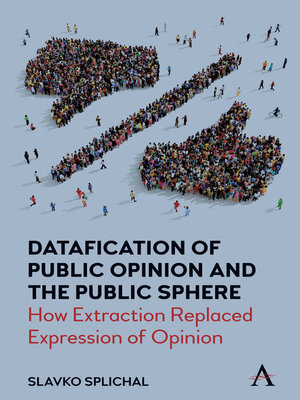Datafication of Public Opinion and the Public Sphere
ebook ∣ How Extraction Replaced Expression of Opinion
By Slavko Splichal

Sign up to save your library
With an OverDrive account, you can save your favorite libraries for at-a-glance information about availability. Find out more about OverDrive accounts.
Find this title in Libby, the library reading app by OverDrive.



Search for a digital library with this title
Title found at these libraries:
| Library Name | Distance |
|---|---|
| Loading... |
The book, anchored in stimulating debates about the Enlightenment ideas of publicness, analyses historical changes in the core phenomena of publicness: possibilities, conditions and obstacles to developing a public sphere in which the public reflexively creates, articulates and expresses public opinion. It is focused on the historical transformation from "public use of reason" through the identification of "public opinion" in opinion polls to contemporary opinion mining, in which the Enlightenment idea of public expression of opinion has been displaced by the technology of extracting opinions. It heralds a new critical impetus in theory and research of publicness at a time when critical social thought is sharply criticising and even abandoning the notion of the public sphere, much like the notion of public opinion decades ago, due to its predominantly administrative use.
|The book, anchored in stimulating debates on enlightenment ideas of the public that culminated and ended in the early 20th century, focuses on historical changes in the core phenomena of publicness: possibilities, conditions and obstacles to developing a public sphere in which publics create, articulate and express public opinion by means of reflexive publicity within an established democratic public culture. Specifically, it is focused on three central topics:
The book seeks to transcend the division into normative-critical theoretical conceptualisation and "constructive" empirical application in the social sciences to show how critical theory can be empirically applicable and empirical research normatively constructive, and to demonstrate the need for greater connectivity between them.







